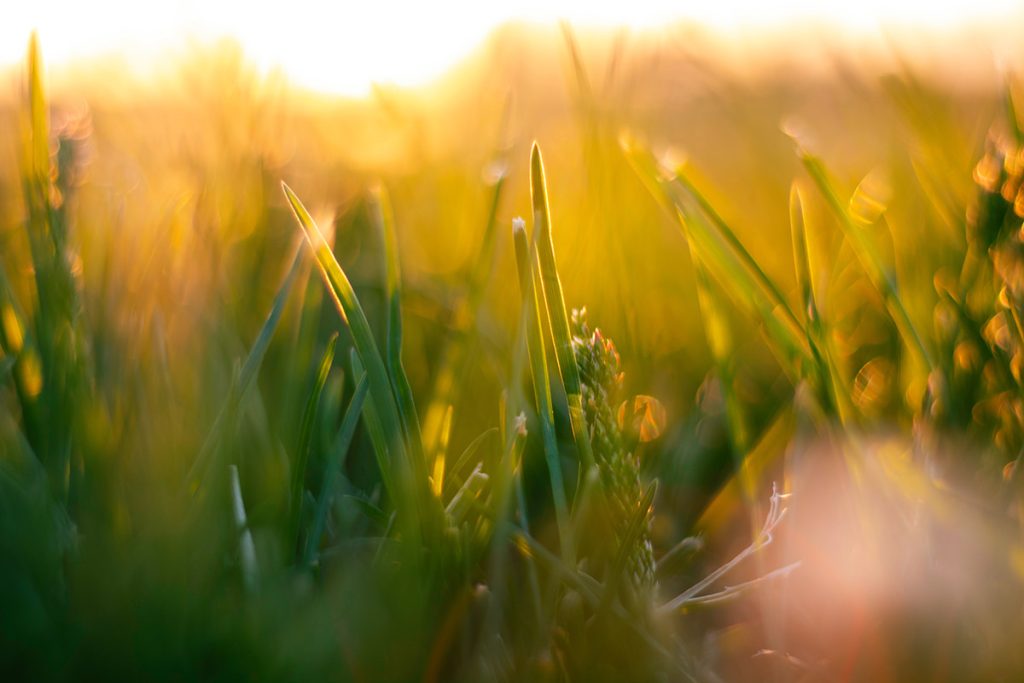
When used as cover crops, grass can be a great addition to your farmland. Native warm-season and cool-season grasses can offer a range of conservation benefits, as well as improvements to the quality of your land.
In general, growing cover crops is a practice done between commodity crops to build soil organic matter, manage moisture or hold soil while another planting takes hold. However, grasses like switchgrass, Canada wildrye, and sideoats grama offer additional benefits over other types of plants if you are looking to maintain the cover for more than a planting season or year.
What are the benefits of growing grass as cover crops? Here, we’ll explore several advantages and how you can get started growing grassland on your farm.
Grass cover crops improve soil retention and water quality
Planting grass can have numerous benefits to the health and quality of your land, including your soil and water. To protect soil from erosion, grass can slow down wind speeds and decrease water velocity. Their deep, complex roots also hold soil in place. This reduces the amount of wind and water erosion impacting the soil. By reducing erosion, grass helps the soil maintain its nutrient levels while keeping harmful sediment from entering nearby water sources.
They add organic matter to the soil
Since they contain higher levels of carbon, grasses contribute to building up organic matter in the soil over time. Additionally, grasses are typically planted using no-till methods, which helps with nutrient retention. Overall, this results in healthier, more fertile soil containing higher amounts of beneficial organic matter.
Grass seed mixes promote diversity
Using a high-quality CRP seed mix to grow native warm-season grasses and other types of grass on your land is an effective way to promote local diversity. Grasslands offer food and shelter to many native plant and animal species, including pheasants, birds, and small mammals. Growing a diverse mix of seeds can substantially enhance the wildlife habitat in your region.
Growing grass for cover crops is economical
While other plants like rye and oats can be used for cover crops, grass is a low-cost, widely available option. Other than regular mowing, it requires little maintenance. If you’re receiving reimbursement payments and other cost incentives from your CRP contract, grass keeps your costs for planting low.
Grass contributes to carbon sequestration
Moreso than other types of plants, grass cover crops can contribute to carbon sequestration efforts. They add significant quantities of organic carbon to the soil with a higher C (carbon): N (nitrogen) rate than other plants like oats. Grasses are also able to retain these nutrients more effectively. This reduces the amount of harmful carbon in the atmosphere that contributes to climate change.
Grass cover crops can be used as biomass
As the demand for more sustainable energy sources grows, grass crops can be useful for biomass production. Switchgrass and other grass species can be used as feedstock for biofuel, biochar, and other bioenergy applications. With the increasing usage of alternative energy, demand for grass crops used as biomass will continue to rise.
Start reaping the benefits of grassland
By growing grass on your farmland as a cover crop, you can reap the various environmental, conservational, and economical rewards. But deciding on the type of grass to grow and establishing a successful grass stand can depend on several factors including your region and your CRP contract.
To start growing grass on your land, contact us at All Native Seed. We can design a custom, quality seed mix for your project that is compliant with FSA and NRCS standards. Plus, our sister company FDCE can help with establishment and documentation for CRP and bioenergy projects. Send us a message today!
